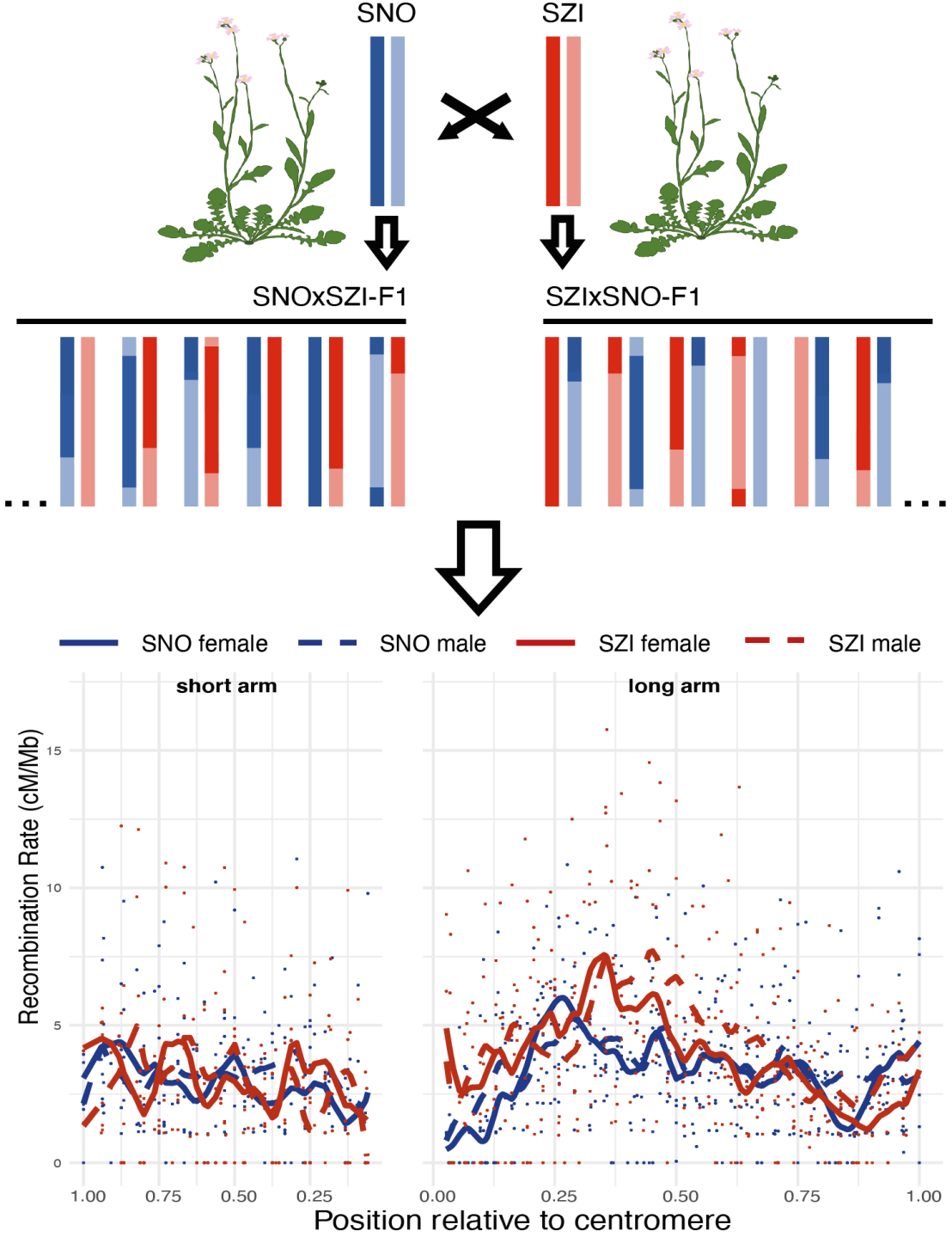Male and female recombination in diploid Arabidopsis arenosa
A recent paper published in the journal Genetics from the Bomblies lab characterizes the meiotic recombination landscape in male and female meiosis of two diploid Arabidopsis arenosa populations. The study is the first genetic map for this species and thus an important resource, but it also reveals several interesting features.

Sexually reproducing organisms shuffle their genetic material into unique combinations during meiosis, a specialized cell division through which gametes (eggs and sperm) are produced. Genetic shuffling is critical important in inheritance and evolution, and occurs via crossovers between parental copies of each chromosome during meiosis. The number and placement of crossovers has important implications for correct chromosome segregation into gametes, for the ability of populations and species to adapt to new challenges, and for applied efforts in crop breeding.
In recent work from the Bomblies lab, recombination placement and number were mapped for two diploid populations of A. arenosa using a combination of cytological and genetic mapping approaches. This allowed description of how recombination rate varies between populations, sexes and individuals, as well as different regions of the genome. The work revealed an interesting correlation between per-chromosome crossover number and positioning along chromosomes that provides a novel explanation for an often-observed but yet unexplained pattern. A difference between species in rate and pattern is attributable specifically to an increase in recombination in male meiosis in A. thaliana. In addition, the study identified several interesting cases of segregation distortion that may result from female meiotic drivers that will be characterized in future.
Link to the paper in external page Genetics.